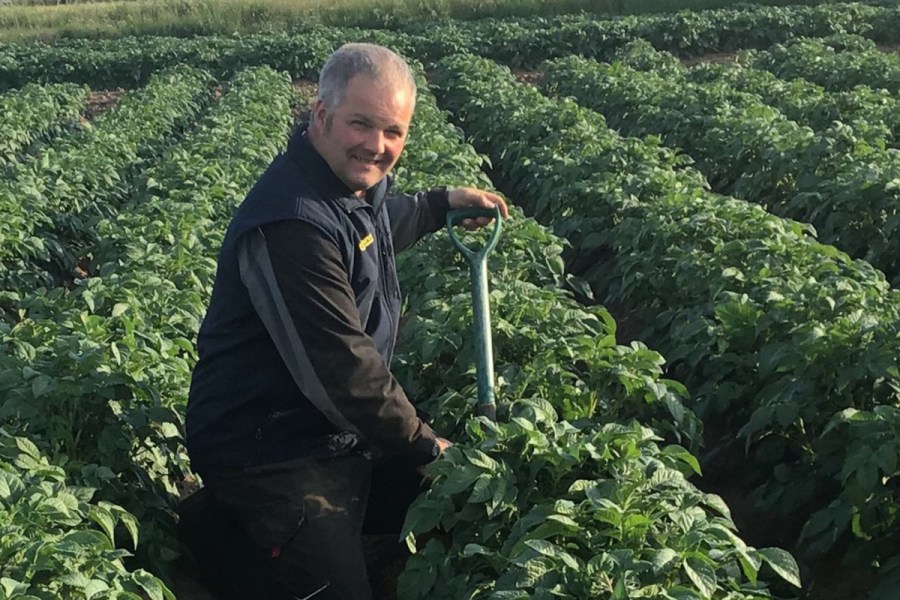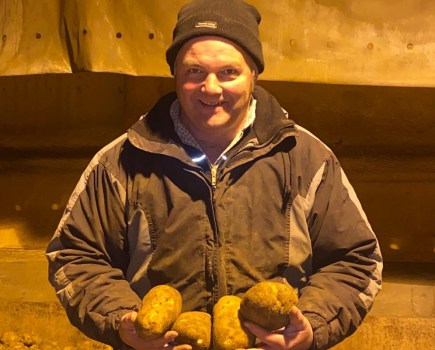Isn’t it grand to have a decent spring? In the past month I’ve sown spring malting barley after sugar beet, and also in place of second wheat on heavier land. This strategic move is to get two consecutive spring crops (spring oats will follow) as another tool in the armoury against blackgrass, but also because a poor second wheat on heavy wet land costs the same to grow as a good crop, with less yield to pay for it.
I’ve also planted oats after beet where there’s a chance of a first wheat in 2026, plus instead of some poor wheat that was drilled with our power harrow drill combination after potatoes last October. The heavy rain that followed was too much and the soil ran together, suffocating the crop. The strip-till drilled wheat after potatoes looks far better on adjacent land, so that’ll be considered more in future.
We had some broiler manure spread on the field post-glyphosate, worked it in, then I drilled with our ‘prairie drill’ (6m tine drill) before 14mm of rain followed. It’s up and away now – I might have been a bit fussier with the seedbed had it been barley.
Our wheat-bean bi-crop also was also axed, or 90% was. I’ve left a tramline at the better side of the field to annoy my combine driver – I mean, test the principle of two crops growing side-by-side. A mixture of drainage issues, crow frenzy and a wet winter rendered the rest of the field unviable.
I’ve drilled the bulk with spring beans which will be followed by a first wheat in 2026 and then potatoes the year after. The BPS used to just about pay our rent, but now that’s been significantly reduced, our experiments have to be smaller scale to reduce risk and allow the ever increasing pile of bills to still be paid.
Speaking of the jumpy government, the proverbial goalposts appear to now have motorised wheels fitted, but with no effective means of steering. We’ve been facilitating environmental stewardship here since the early 1990s but given my Mid-Tier agreement didn’t end until February, it was a real pain to overlap it with SFI.
As we were told we’d have six weeks’ notice of major changes, I let it run its course. How foolish was I? Hindsight is marvellous and arguably I ought to have started an agreement for the policy side of SFI and a few extras like cover crop funding, but being a man and a half down in our regular farm team was draining as it was.
Consequently, 30+ years of habitat creation looks to be in vain, because those areas for all they are less productive, now generate cost without revenue and so change has had to happen. For example, some of the bird cover areas have gone back into the main of the fields and will in future be sown with a combinable break crop when the larger lighter areas of those fields are producing root crops. It’s all hassle and may be subject to change, but doing nothing isn’t viable at the moment. Two of the AB1 plots will be grassed down for hay given they border water and flood regularly in winter. What a mess the system is.
On a positive note, Tom (my recently recruited apprentice) and I have rehashed our beet establishment rig and it’s worked well. I didn’t feel seed placement was as good as it could be previously, but some elements – particularly placed fertiliser – had to stay.
After a few years of min-till beet, we’ve reintroduced the plough, which also buried the Sylvinite, Limex and FYM. 40% of the nitrogen was then broadcast as urea onto the pressed ploughing, along with some polyhalite, which was incorporated with the tine drill as it sowed the nurse cereal.
The low disturbance tine/power harrow/precision drill rig then followed to complete the job in the last days of March, a full five weeks earlier than last year. We placed another 30% of the crop’s N as liquid down the back of the leading tines of the drill rig, along with some molasses.
Last year’s beet crop deliveries were complete by early March with a performance just above our five-year average, and favourable sugar and dirt figures which makes a refreshing change after the depressing stats of 2023.
The wanderer has returned – my globe-trotting right-hand man has spent the past few months working in New Zealand and has brought back lots of ideas and even more enthusiasm than he went out there with – it’s great to have him back.
My team and I were also part of Ben’s send off and take some solace in that he’s now at peace. He’s much missed but we must continue, time stands still for no man.
It’s tough out there for all of us and we’re stronger together, but sometimes it’s easy to forget that when politics, weather, uncertainty, breakdowns and whatever else descends. Don’t be alone – it’s always good to ‘compare disasters’ with comrades – problems seem to shrink after a rant or natter.
As I write this on April Fool’s Day we’re about to start planting spuds in these parts, but more on that next time. Look after yourselves, and here’s to a decent harvest.
This article was taken from the latest issue of CPM.
For more articles like this, subscribe here.
Sign up for Crop Production Magazine’s FREE e-newsletter here.




